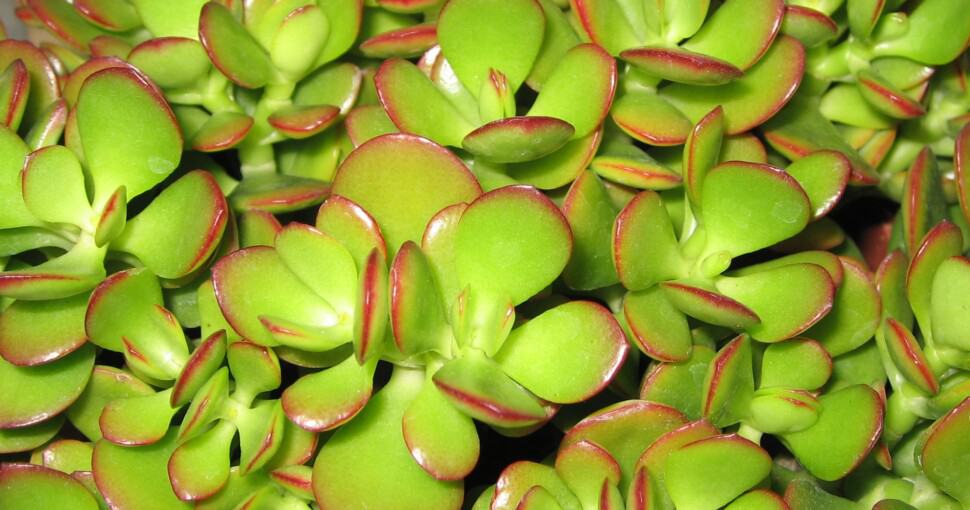Jade is a type of precious mineral that can range from light, speckled green to dark, brilliant shades of emerald. The mineral is used for ornamental purposes, as well as jewelry and creating fine art. With its stunning colors, many plant lovers are on the hunt for plants in the same shape or shade as Jade.
Contents
Because of the resemblance of their leaves to Jade gemstones, Crassula plants have been dubbed ‘Jade plants.’ Of course, this means that many varieties that belong to the Crassula species are coveted for their beauty and perfectly rounded leaves.
While Jade is usually green, it can also have white or yellow hues, making it look even more like the colors commonly found on plant leaves. This is particularly true for variegated plants with white or yellow speckles.
This list will help create a guideline on which plants to look for when sourcing plants that look like Jade. It also discusses each plant’s unique characteristics and appearance for a more detailed guide for plant enthusiasts that want to make their green thumb even greener.
Crassula plants from the Crassulaceae are the plants most often compared with Jade. But they aren’t the only ones. Nicknamed Jade plants, they draw inspiration from the color of the gemstones. Still, they can vary greatly in color, size, shape, and appearance. That means that some Jade plants look less like Jade gemstones than others.
Some of the plants on this list resemble Jade gemstones because of their pigmentation or shape, while others look like Jade jewelry and tumbled stones. Whatever plant you choose to complement your home, make sure it comes from this list! These are the top six plants that look almost identical to Jade gemstones.
Related: 4 Jade Plant Benefits
1. Brevialata
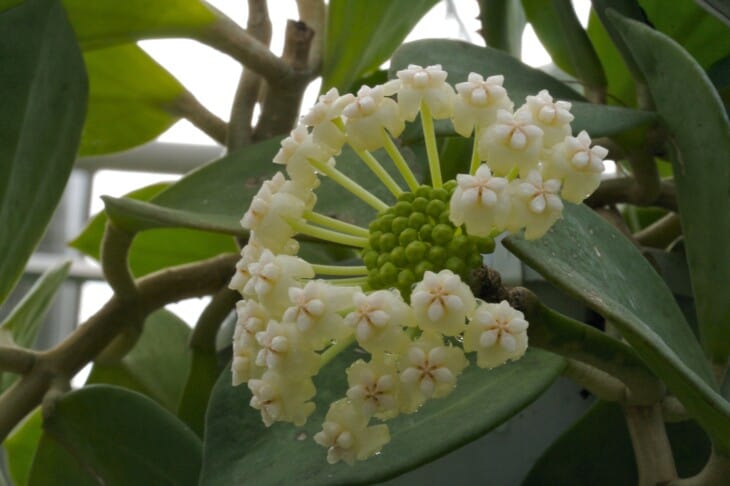
Hoya Brevialata, also known as the Wax Flower, is a perfect match for a plant that looks like Jade gemstones. It is a tropical plant that grows naturally in Southeast Asia. The Hoya Brevialata is an epiphyte that grows on other surfaces rather than from the ground.
This vining plant can grow long, beautiful stems full of small, rounded leaves that look like smoothly polished Jade. It is also one of the smallest Hoya plant varieties and grows well indoors in decorative and hanging flower pots. If it is in a traditional pot, it must be placed on a surface where its stems can extend and grow without interruption.
To maintain its pleasing aesthetics, the Hoya Breviata must be regularly pruned. When the plant begins to overgrow, it looks less and less like Jade gemstones running along the vines and more like a tangled mess! So if you want to keep one of these plants in your home, you’ll need to learn how to care for it properly.
2. Crassula Ovata
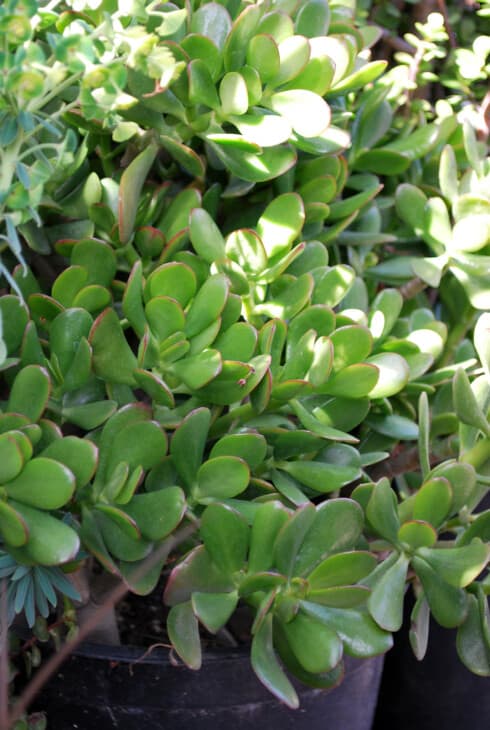
The Crassula Ovata is aptly named, making it an obvious choice for this list. Known as the Jade plant, it’s the closest thing to Jade you can find. And, like the gemstone, this plant is believed to bring luck and fortune, earning it the nicknames ‘the Money plant’ and ‘the Lucky plant.’
With oval leaves and rounded tips, the plant could easily be mistaken for a bush full of Jade gemstones. The dark green hue of the leaves also resembles the richest shade of Jade, making it even more believable. Starting off small, these plants can vary in size and can grow quite large when grown outdoors. However, they’re more popular as indoor plants.
Some of these plants may have a red border around the leaves, with a yellow coloring in the middle of the leaves. While they look gorgeous on a windowsill or brightly-lit room, they don’t have the same awe-inspiring look as their darker-colored siblings.
3. Ripple Jade Plant
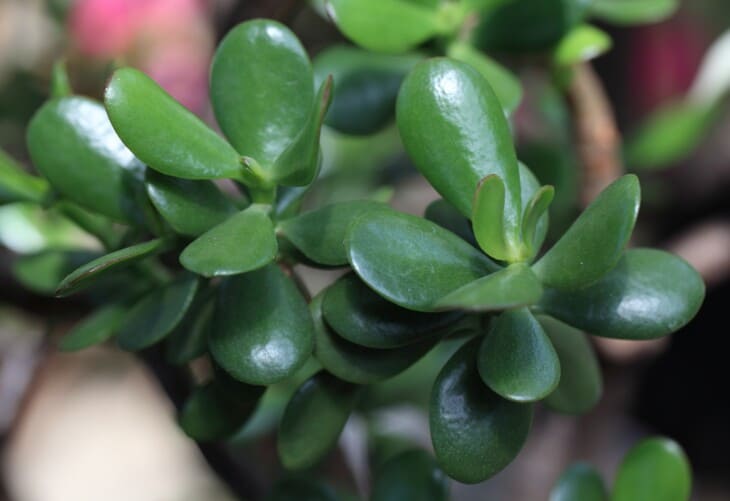
Another Crassula variety that is Jade-like in appearance is the Crassula Arborescens Undulatifolia. Its scientific name can be a mouthful, to say the least! For that reason, most plant lovers refer to this variety as the Ripple Jade plant. And its nickname is pretty accurate!
With tightly packed, light-green leaves, the plant’s pattern looks like ripples in a pond. Each leaf is surrounded by several others, making it looks like the plant extends outwards in a ripple effect. The leaves also have a slight wave or curve to them, giving them a textured look. This texture is unique for Crassulas, which are normally smoother and rounder like a polished Jade gemstone.
The rough pattern the leaves create looks like raw Jade or pieces of tumbled Jade, which can vary in shape and size and usually have oblong edges. With a short, broad stem that dives deep into the soil, the Ripple Jade is exactly what one would imagine if one thought about growing a plant from a piece of Jade mineral.
4. Baby Jade Plant
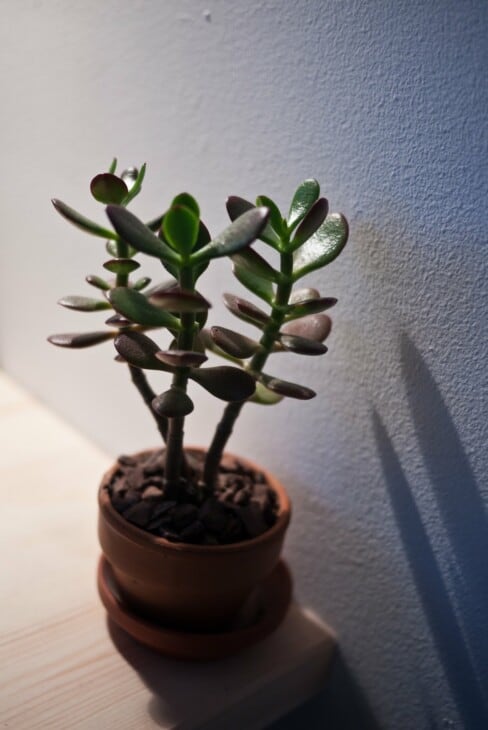
As its name suggests, Crassula Ovata Minima, or the Baby Jade plant, is a miniature version of its big brother. It looks almost indistinguishable from Crassula Ovata, and for a good reason. The word ‘Minima,’ meaning ‘smallest,’ is the perfect description for this tiny indoor plant.
The Baby Jade is known for producing light pink blooms that perfectly complement the bright green leaves. This succulent also loves the sun, but it can lose its Jade-like qualities when it’s over-exposed to direct sunlight. When this happens, the edges of the leaves take on a reddish hue, taking away the characteristics it shares with Jade gemstones.
With regular pruning, the Baby Jade can stay small and compact. But without it, it can grow tall and shrub-like. While the shrub looks great planted outdoors, it can be a handful to manage when placed in your home. Suppose you want to keep your Baby Jade as compact as it was when it started growing. In that case, it’s recommended to research its specific care instructions.
5. Chinese Jade Plant
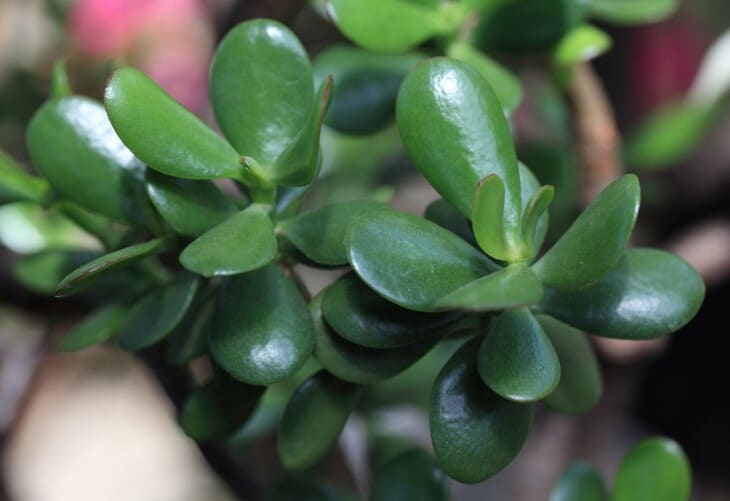
Although this plant is named after Jade, it is surprising to learn it’s not part of the Crassula family! Instead, the Portulacaria Afra belongs to the Didiereaceae family. Native to South Africa, this succulent is also affectionately referred to as Spekboom or the Porkbush. It is used to create varieties of Bonsai.
With a red stem and bright green leaves, the plant has a gorgeous appearance with a stark color contrast. The small, round leaves are often tightly packed together in groups, resembling a group of tumbled Jade gemstones.
This could be a good starter plant for those who want a plant that resembles Jade but doesn’t have the gardening know-how for more advanced plant care. With easy care requirements and hardly any special growing conditions, almost any first-time plant lover could help it to thrive.
6. Jade Necklace Plant
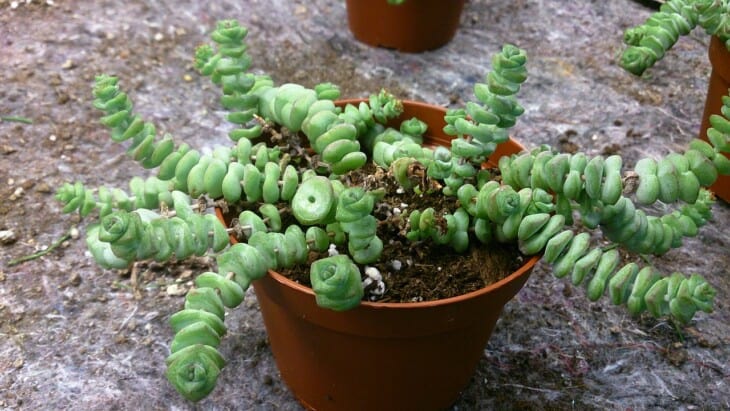
The last plant on our list is, unsurprisingly, another plant belonging to the Crassula family. The Jade Necklace plant or Crassula marnieriana looks exactly as it sounds: Like a Jade necklace! With long stems filled with rows of flowers, the plant looks like a delicately threaded piece of jewelry.
The succulent leaves are packed so closely together that most onlookers cannot see the stems underneath. This is perhaps what gives the Jade Necklace one of the most unique aesthetics of all the other Jade-like plants.
With heavy, spongy leaves, the stems often droop off the plant and can grow pretty long. But for some cultivars, the weight of the leaves has better balance and keeps the stems upright. Depending on their preference, plant enthusiasts can enjoy either one of these indoor plants in a sunny spot in their homes.

